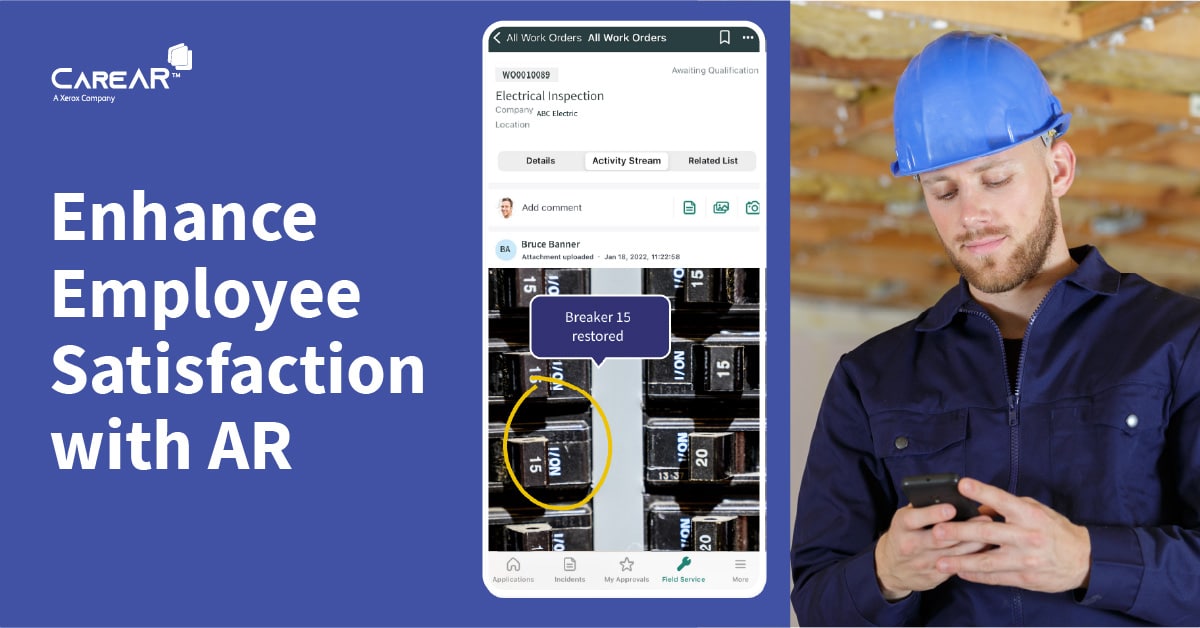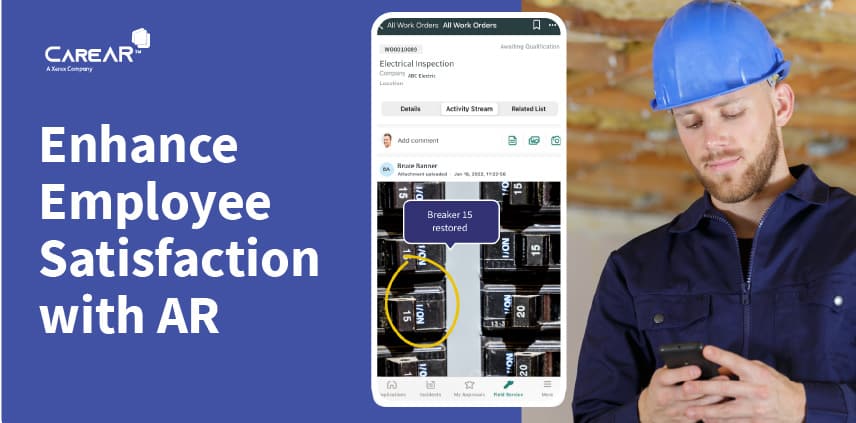
In today’s rapidly evolving technological landscape, businesses constantly seek innovative ways to enhance employee satisfaction and retention. One powerful tool is through augmented reality (AR) and artificial intelligence (AI). Augmented reality overlays digital information onto the real world, creating a seamless blend of virtual and physical environments. Combined with AI for camera calibration, tracking, detection, and orientation augmented reality makes it more practical for environments with different degrees of variability that must be accounted for. Essentially, AI makes AR work better.
This technology, originally associated with gaming and entertainment, is now making waves in the enterprise world by transforming how employees work, learn, and interact. Augmented reality software for the service industry is becoming a significant factor in boosting employee satisfaction and retention rates.
AR is an Incentive to Thrive at Work
Offering cutting-edge technology at the workplace serves as a potent incentive for employees. PwC released a study in which they used immersive technology for employee training. Results revealed that trainees could be trained up to four times as fast, gave learners more confidence, and were more connected and engaged1. Introducing augmented reality software sends a message to employees that their company is committed to embracing innovation and providing tools that can enhance their skills and productivity. This perceived investment in employee development can foster a sense of loyalty and pride among the workforce.
Ease of Work and Training Revolution
One of the most significant advantages of augmented reality software lies in its ability to streamline complex tasks and improve the learning curve. Traditional training methods can be time-consuming and often lead to information retention challenges. Augmented reality, however, creates immersive learning experiences that allow employees to visualize complex procedures and tasks in real time. This approach has been proven to improve understanding and retention rates.
For instance, when Xerox adopted CareAR® Assist for their service delivery team in 2022, they reduced training time to less than 60 minutes. Such improvements enhance efficiency and contribute to employee satisfaction by reducing frustration and boosting their confidence in their work.
Augmented Reality Increases Remote Collaboration and Productivity
The COVID-19 pandemic accelerated the adoption of remote work, and augmented reality has played a crucial role in maintaining collaboration and productivity. Remote collaboration tools powered by AR enable employees to virtually meet, share, and interact as if they were in the same physical location. This technology has been particularly beneficial for industries that require visual communication, such as design, architecture, and manufacturing.
Statistics reveal that 80% of companies had implemented or expanded universal work from home policies and 67% expect them to remain long term or permanent post-pandemic2. Augmented reality software supports this transition by ensuring employees can continue collaborating seamlessly, fostering a sense of connectedness, and preventing feelings of isolation that could contribute to dissatisfaction and turnover.
3D Models Help Employees Upskill
Investing in employees’ skill development is essential for a successful team. Augmented reality software offers a dynamic way to upskill and reskill employees. CareAR® Instruct offers digital twin capabilities providing employees with 3D models that they can explore and break apart to learn components before repairing in real life.
When employees have the opportunity to enhance their skill sets, they are more likely to feel engaged and valued within the organization. This, in turn, increases their loyalty to the company and reduces the likelihood of seeking new employment opportunities.
Augmented Reality Software Enables Personalized Experiences and Engagement
Augmented reality software enables the creation of personalized experiences tailored to individual employees. Companies can enhance engagement and job satisfaction by catering to different learning styles and preferences. This technology can be used to develop custom onboarding experiences, interactive product demonstrations, and even gamified training modules that make learning more enjoyable.
The Deloitte 2023 Global Human Capital Trends survey reported that more than 90% of surveyed business leaders believe that using technology to improve work outcomes and team performance is very important or important to their organizations‘ success3. Augmented reality’s ability to create engaging and interactive experiences contributes to a positive work environment, where employees feel valued and motivated.
In conclusion, augmented reality software is proving to be a game-changer in boosting employee satisfaction and retention rates. Its ability to offer cutting-edge technology, streamline work processes, enhance training, foster remote collaboration, and personalize experiences aligns well with the evolving expectations of the modern workforce. As businesses continue to integrate AR into their operations, they are enhancing employee morale and ensuring their competitiveness in an increasingly digital world.
By embracing augmented reality, companies are investing in their employees’ success and securing their own future as innovative leaders in their respective industries.
